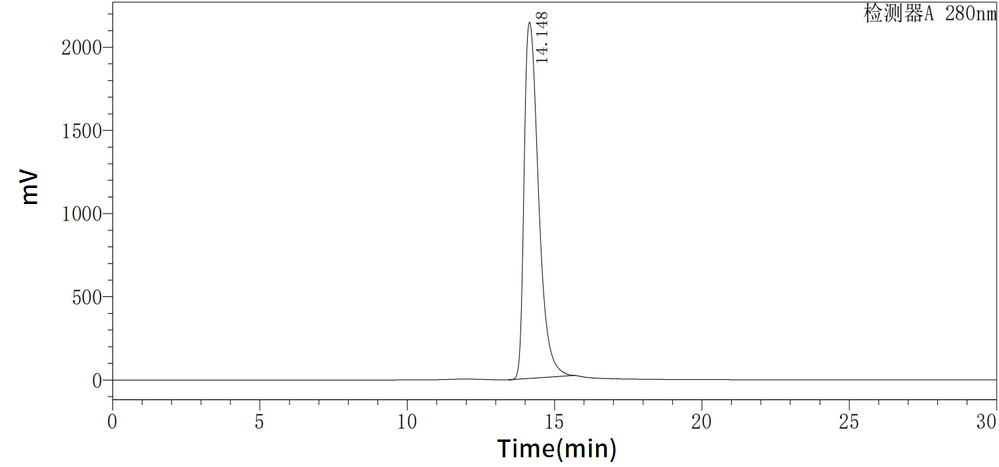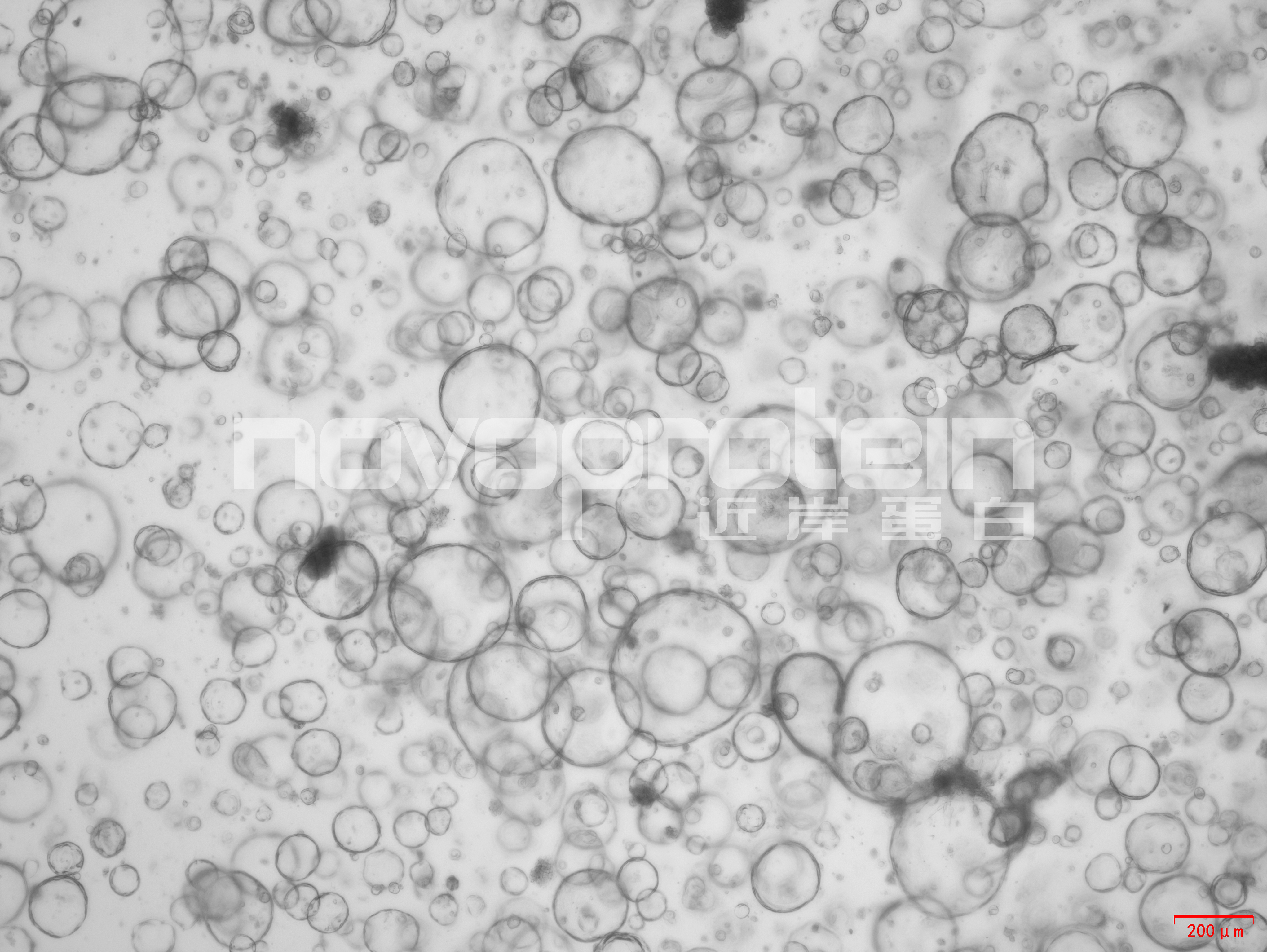Recombinant Human FGF-10(Cat. No.:CR11)
该产品共有2篇文献引用
Recombinant Human Fibroblast Growth Factor 10 is produced by our E.coli expression system and the target gene encoding Gln38-Ser208 is expressed.
O15520
Fibroblast growth factor 10;FGF-10;Keratinocyte growth factor 2;FGF10;KGF-2;KGF2
19.5 KDa
19-22 KDa, reducing conditions
Lyophilized from a 0.2 μm filtered solution of 20mM Tris-HCl, 200mM NaCl, pH 8.0.
Less than 0.001 ng/µg (0.01 EU/µg) as determined by LAL test.
 Greater than 95% as determined by reducing SDS-PAGE.
Greater than 95% as determined by reducing SDS-PAGE.
 Greater than 95% as determined by SEC-HPLC. (Regularly tested)
Greater than 95% as determined by SEC-HPLC. (Regularly tested)
 Mouse Gastric organoids were cultured with EGF (Cat#C029), Wnt3a (Cat#C22R), Noggin (Cat#C028) , R-spondin 1 (Cat#CX83) and FGF-10 (Cat#CR11). The organoids showed good morphology.
Mouse Gastric organoids were cultured with EGF (Cat#C029), Wnt3a (Cat#C22R), Noggin (Cat#C028) , R-spondin 1 (Cat#CX83) and FGF-10 (Cat#CR11). The organoids showed good morphology.
 Mouse bile duct organoids were cultured with EGF (Cat#C029) , R-spondin 1 (Cat#CX83) ,FGF-10 (Cat#CR11) and HGF (Cat#CJ72). The organoids showed good morphology.
Mouse bile duct organoids were cultured with EGF (Cat#C029) , R-spondin 1 (Cat#CX83) ,FGF-10 (Cat#CR11) and HGF (Cat#CJ72). The organoids showed good morphology.
- Always centrifuge tubes before opening.Do not mix by vortex or pipetting.
- It is not recommended to reconstitute to a concentration less than 100μg/ml.
- Dissolve the lyophilized protein in distilled water.
- Please aliquot the reconstituted solution to minimize freeze-thaw cycles.
- Lyophilized protein should be stored at ≤ -20°C, stable for one year after receipt.
- Reconstituted protein solution can be stored at 2-8°C for 2-7 days.
- Aliquots of reconstituted samples are stable at ≤ -20°C for 3 months.
- The product is shipped at ambient temperature.
- Upon receipt, store it immediately at the temperature listed below.
Fibroblast growth factor 10 (FGF-10, KGF-2), is a member of the fibroblast growth factor (FGF) family that includes FGF-3, -7, and -22. KGF-2 is secreted by mesenchymal cells and associates with extracellular FGF-BP. It preferentially binds and activates epithelial cell FGFR2 and interacts more weakly with FGFR1. It plays an important role in the regulation of embryonic development, cell proliferation and cell differentiation. It exhibits mitogenic activity for keratinizing epidermal cells, but essentially no activity for fibroblasts, which is similar to the biological activity of FGF7. FGF10 is required for normal branching morphogenesis. Defects in FGF10 are the cause of autosomal dominant aplasia of lacrimal and salivary glands (ALSG). ALSG has variable expressivity, and affected individuals may have aplasia or hypoplasia of the lacrimal, parotid, submandibular and sublingual glands and absence of the lacrimal puncta. The disorder is characterized by irritable eyes, recurrent eye infections, epiphora (constant tearing) and xerostomia (dryness of the mouth), which increases the risk of dental erosion, dental caries, periodontal disease and oral infections.
仅供科研或生产使用,不可直接应用于人体。
1.《Multifunction Sr, Co and F co-doped microporous coating on titanium of antibacterial, angiogenic and osteogenic activities》
作者:Jianhong Zhou ,Lingzhou Zhao 影响因子:4.259
期刊:《Scientific Reports 6, Article number: 29069 (2016)》 PMID:27353337
作者:Jianhong Zhou ,Lingzhou Zhao 影响因子:4.259
期刊:《Scientific Reports 6, Article number: 29069 (2016)》 PMID:27353337
| 用户名: | (可为空) |
| E-mail: | *(必填) |
| 评价等级: |





|
| 评论内容: |
*(必填)
|
 中文
中文 

